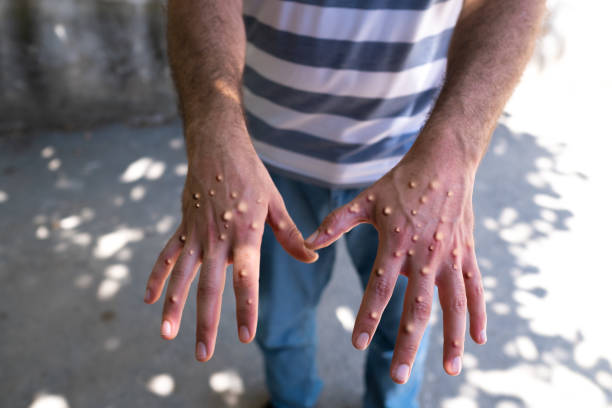
monkey flower don't touch me lettering. not to touch to avoid virus.

What is Chickenpox?
Chickenpox, also known as Varicella, is a highly contagious viral infection caused by the varicella-zoster virus. It primarily affects children but can also infect adults who haven’t been vaccinated or previously exposed. The infection typically presents with a red, itchy rash that develops into fluid-filled blisters.
Types of Chickenpox
- Typical Chickenpox: The common form with a characteristic rash that starts as red spots, then turns into blisters.
- Atypical or Severe Chickenpox: A rare, more intense version, which may occur in immunocompromised individuals. It involves a more widespread rash and complications.
Main Causes of Chickenpox
Chickenpox is caused by the varicella-zoster virus (VZV), which is part of the herpes virus family. It spreads through:
- Direct contact with an infected person’s rash.
- Airborne transmission via respiratory droplets.
- Contact with fluids from the blisters.
Signs and Symptoms of Chickenpox
- Red, itchy rash that progresses to blisters and then scabs.
- Fever (often the first sign before the rash appears).
- Fatigue and irritability.
- Loss of appetite.
- Body aches and headaches.
Risk Factors for Chickenpox
- Age: Common in children under 12 years.
- Weakened immune system: Those with a compromised immune system (e.g., due to HIV, cancer, or organ transplants) are at greater risk.
- Unvaccinated individuals: People who have not had the vaccine or the disease.
- Close contact: Living or working in environments where someone is infected increases the risk.
How to Prevent Chickenpox
- Vaccination: The varicella vaccine is the most effective prevention method.
- Avoid close contact: Stay away from infected individuals if you’re unvaccinated.
- Good hygiene: Wash hands frequently and avoid touching your face.
- Isolate infected individuals: Keep those with chickenpox away from others until all blisters have scabbed over.
How is Chickenpox Diagnosed?
- Physical examination: A doctor can usually diagnose chickenpox based on the appearance of the rash.
- Blood tests: In rare cases, a blood test may be conducted to confirm the presence of the virus.
- PCR tests: A test of the fluid from a blister to detect the virus directly.
How to Treat
- Antiviral medications: Such as Acyclovir may be prescribed for high-risk individuals.
- Antihistamines: To reduce itching and discomfort.
- Fever control: Acetaminophen or ibuprofen to reduce fever (Avoid aspirin in children).
- Hydration: Drink plenty of fluids to avoid dehydration.
Home Remedies
- Oatmeal baths: Soaking in a lukewarm oatmeal bath can relieve itching.
- Baking soda: Apply a paste made with water and baking soda to the itchy areas.
- Calamine lotion: Helps soothe the skin and reduce itching.
- Honey application: Natural honey can be applied to soothe the rash.
Ayurvedic Medicine to Cure Chickenpox
- Neem (Azadirachta indica): Neem leaves have antiviral properties. A bath with neem leaves can help soothe the skin.
- Turmeric: Known for its antiseptic properties, turmeric paste may help speed up the healing process.
- Giloy (Tinospora cordifolia): Boosts immunity and helps fight infections.
- Madhuyashti (Licorice): Known to have antiviral effects, it helps soothe inflammation and boosts immunity.
Precautions and Self-Care Tips
- Avoid scratching: Scratching can lead to scarring and infections.
- Wear loose, comfortable clothing to avoid irritation.
- Stay hydrated: Drink plenty of water, juices, and electrolyte-rich fluids.
- Rest: Ensure adequate rest for faster recovery.
Conclusion
Chickenpox is a common viral infection, especially among children, but can be prevented with vaccination. While it’s usually mild, complications can arise in high-risk groups, necessitating early treatment. Home remedies and Ayurvedic solutions may complement conventional treatments, offering relief from symptoms.
Disclaimer
The information provided here is for educational purposes and should not substitute for medical advice. Always consult with a healthcare provider for accurate diagnosis and treatment.
Additional Tips
- Boost immunity by eating a nutritious diet rich in fruits and vegetables.
- Clip nails short to reduce the risk of scratching-induced infections.
- Keep the skin cool by avoiding heat exposure, which can worsen itching.
Other link-https://www.practo.com/






